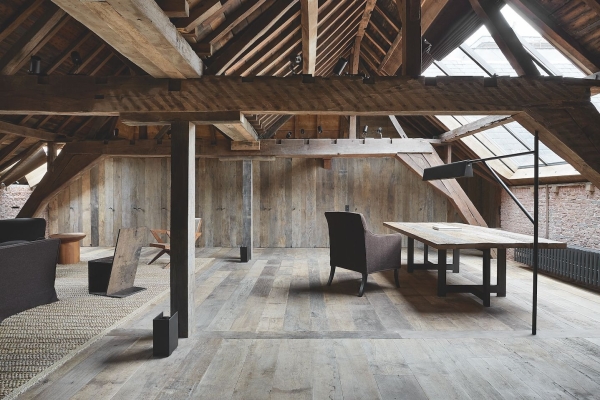【 Going beyond aesthetics, wabi sabi is a Japanese philosophy that lets us accept life’s sublime imperfections. 】
Nothing is perfect. Nothing is finished. Nothing lasts forever. These are the phrases that encapsulate wabi sabi, the Japanese philosophy that, in the words of Nobuo Suzuki, author of the bestselling book Wabi Sabi: The Wisdom of Imperfection, embraces the beauty of the incomplete, the impermanent and the imperfect. As wabi sabi encompasses the principles of kanso (simplicity), shizen (naturalness), fukinsei (asymmetry) and yūki tekusucha (organic texture), it presents a different view of aesthetics, one that is unique to the Japanese. For them, the ideal of beauty does not seek symmetry and uniformity. Instead, the Japanese seek naturalness. As Suzuki writes, “For a Westerner, the most beautiful cup is an impeccably fashioned one, with a perfect circumference, a smooth immaculate surface and—if it is decorated—an exact and uniform arrangement of the decorations.” However, for the Japanese, the one with flaws is regarded as the most highly-valued. For these flaws, dents and cracks make the piece unique.
This unique perspective on aesthetics made wabi sabi popular in the global design sphere with architects and designers applying its principles to architecture and interior design. One of the creative geniuses who appreciates the wabi sabi philosophy in design is the multi-awarded Belgian architect Vincent Van Duysen. He shares, “Just like this ancient Japanese mindset, I also appreciate the ephemeral and imperfect essence of life. By emphasising simplicity and serenity, wabi sabi also broadens into a way of life that rejects the idea of materialism.” He reiterates the key elements of wabi sabi to be humbleness, intimacy, roughness, asymmetry and the passage of time. For him, the careful selection and addition of natural materials, texture and light into the home truly adds to the emotional beauty of the living space.
Wabi sabi also encourages putting value on what already exists rather than constantly seeking out new and perfect things. In this sense, it promotes sustainable living through reusing and repurposing materials, skillful repairing of broken items, and the appreciation of the natural beauty of the environment. Therefore, wabi sabi helps reduce waste, conserve resources and minimise impact on the environment.
Incorporating wabi sabi into the home does not require many resources as it, first and foremost, adheres to minimalism. This means that the design is stripped down to its bare essentials, with only the necessary elements remaining. For example, a wabi sabi home may have exposed concrete walls, wooden floors and understated furniture. A typical wabi sabi room needs no other accessory such that the bare walls are bereft of any decoration, and instead use the dramatic play of shadows and bouncing light. This empty room, devoid of electronic devices and gadgets, can afford a simple tatami and two cushions where you can sit, read or meditate. Wabi sabi promotes emptiness, reiterating that one does not need anything to be happy, other than a little food, water or tea, sleep and the air that you breathe. In other words, wabi sabi teaches us to eliminate everything superfluous to leave space for what is essential.
To apply the key principles fukinsei (asymmetry) and yūki tekusucha (organic texture), natural flaws and irregularities of materials and shapes are given prominence instead of being concealed. A table made from a rough piece of wood with knots and imperfections, rather than a perfectly polished and smooth piece of wood echoes these two principles. “For me, wabi sabi means respecting nature and decay, seeing the beauty in decay,” shares Aaron Isip, whose home, featured in Volume 27 of Tatler Homes Philippines, echoes this Japanese philosophy. “It’s all about lending integrity to the raw materials and letting them be as they are. Although the philosophy began in Japan, it can be applied to any aesthetic, even French design. Think of unrestored antique French furniture, wrought irons or oxidised copper, things with age and patina.” Other examples are keeping the cracks of a hundred-year-old traditional house; or restoring a broken teacup using kintsugi techniques or the Japanese art of repairing broken pottery with lacquer dusted or mixed with powdered gold, silver or platinum.
Paying homage to nature, natural materials such as wood, stone, and clay are mostly used for their natural textures, colour and patterns. These materials are often left untreated or finished with natural oils or waxes, to allow them to age gracefully over time. In this sense, wabi sabi lets us appreciate impermanence.
In terms of architecture, a wabi sabi structure is often built within or around nature itself–a vantage point where one can, for instance, enjoy the freshness of the river nearby or hear the murmur of the water that mixes beautifully with the tweeting of bird; or enjoy the views of tree canopies sweeping the mountains through large picture windows. There is also an apparent play of shadows, textures and asymmetric lines.
Overall, wabi sabi is a refreshing approach to architecture and interior design. As Confucius once said, “Life is really simple, but we insist on making it complicated.” By incorporating the wabi sabi philosophy at home, we can reset and restart anew.
________________________________________________________________________________________________________________________________________________________
▪ Source: Tatler Asia|https://www.tatlerasia.com/homes/architecture-design/what-is-wabi-sabi-and-how-to-incorporate-it-into-the-home
▪ Words: Maritess Garcia Reyes
▪ Photography Credit: © Kasia Gatkowska, © Dexterton, © Vincent Van Duysen, © Koen Van Damme, © Paco Guerrero, © Kuysen


